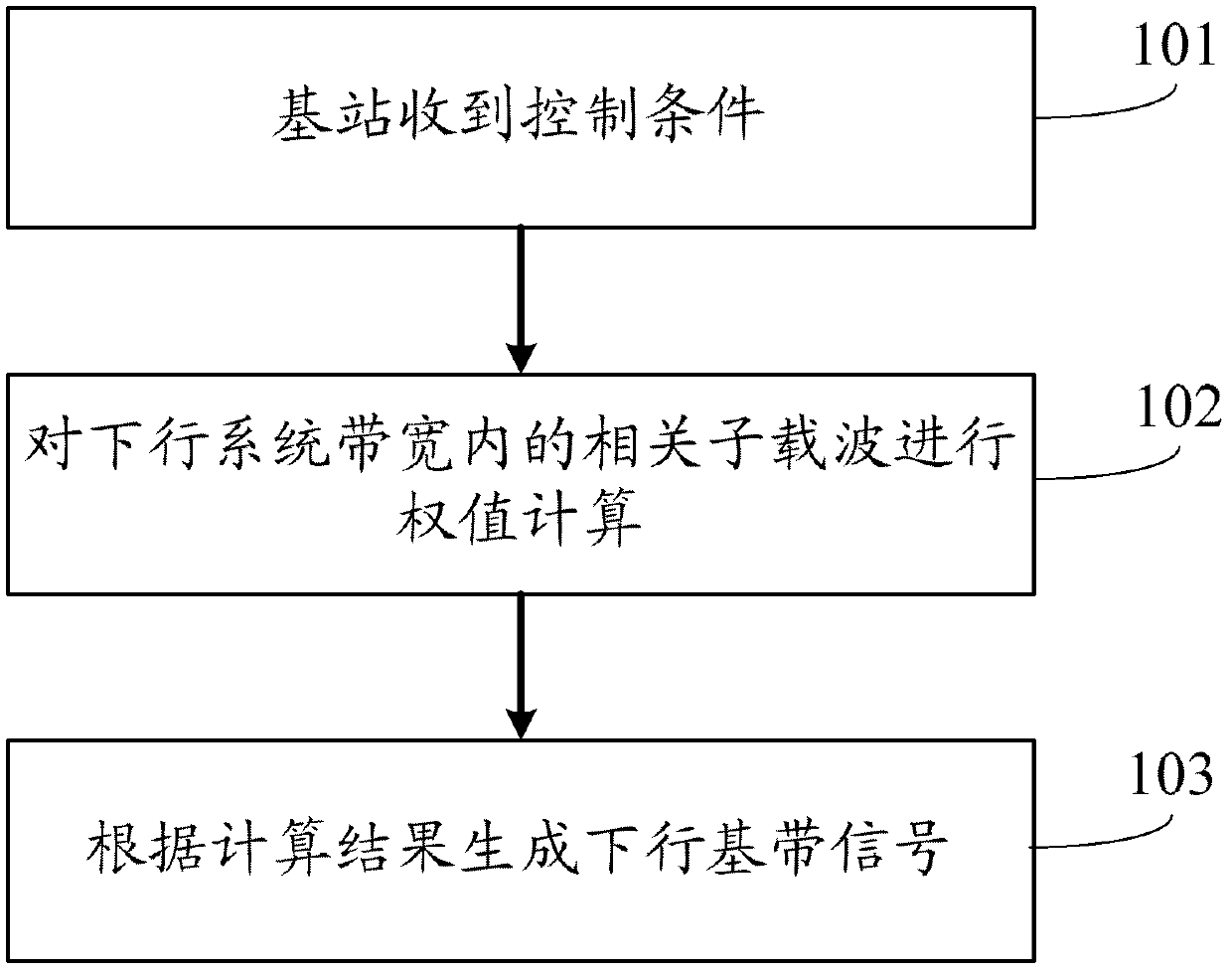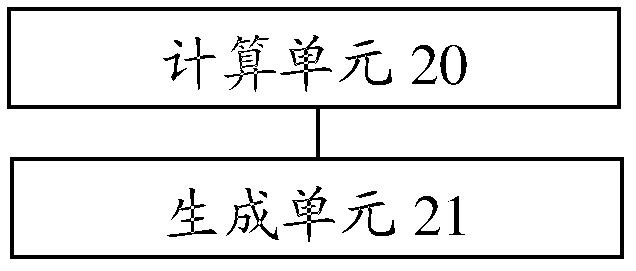Downlink base-band signal generation method and device, and base station
A baseband signal and signal coverage technology, applied in digital transmission systems, electrical components, transmission systems, etc., can solve problems such as increasing system delay, reducing practicability, and extending symbol time
- Summary
- Abstract
- Description
- Claims
- Application Information
AI Technical Summary
Problems solved by technology
Method used
Image
Examples
Embodiment 1
[0132] In this embodiment, the out-of-band emission requirements for baseband signals come from internal control conditions. Assuming that TS36.104 puts higher requirements on the double-sided out-of-band radiation of the base station, specifically, on the left side of the channel bandwidth (ie, the left side of the negative frequency range of the channel bandwidth), from the frequency range -f 2 to -f 1 (f 1 > f 2 >10), the total power of out-of-band radiation is not greater than P l ; On the right side of the channel bandwidth (ie, the right side of the positive frequency range of the channel bandwidth), from the frequency range f 3 to f 4 (f 4 > f 3 >10), the total power of out-of-band radiation is not greater than P r . When the system downlink bandwidth is 20MHz, the number of weighted effective subcarriers bound to the bandwidth is 10, and they are distributed on the left and right edges of the effective data subcarriers on the frequency spectrum. Specifically, ...
Embodiment 2
[0142] In this embodiment, the out-of-band emission requirements for baseband signals come from internal control conditions. Assuming that TS36.104 puts higher requirements on the SSB out-of-band radiation of the base station, specifically, on the left side of the channel bandwidth (ie, the left side of the negative frequency range of the channel bandwidth), from the frequency range -f 2 to -f 1 (f 1 > f 2 >10), the total power of out-of-band radiation is not greater than P l , on the right side of the channel bandwidth (i.e., the right side of the positive frequency range of the channel bandwidth), from the frequency range f 3 to f 4 (f 4 > f 3 >10), the total power of out-of-band radiation is not greater than P r . In the case of a system downlink bandwidth of 20MHz, the number of weighted effective subcarriers bound to the bandwidth is 10, but the positions of these 10 weighted effective subcarriers are uncertain. According to the principle of permutation and combin...
Embodiment 3
[0152] The difference between this embodiment and Embodiment 1 is that the number of subcarriers participating in weighting is a system-configurable value. In this embodiment, the number of subcarriers participating in weighting is configured to be 8. Then, the inequality to be solved is :
[0153] ∫ - f 2 - f 1 [ ( Σ n = - 596 , n ≠ 0 596 ...
PUM
 Login to View More
Login to View More Abstract
Description
Claims
Application Information
 Login to View More
Login to View More - R&D
- Intellectual Property
- Life Sciences
- Materials
- Tech Scout
- Unparalleled Data Quality
- Higher Quality Content
- 60% Fewer Hallucinations
Browse by: Latest US Patents, China's latest patents, Technical Efficacy Thesaurus, Application Domain, Technology Topic, Popular Technical Reports.
© 2025 PatSnap. All rights reserved.Legal|Privacy policy|Modern Slavery Act Transparency Statement|Sitemap|About US| Contact US: help@patsnap.com



